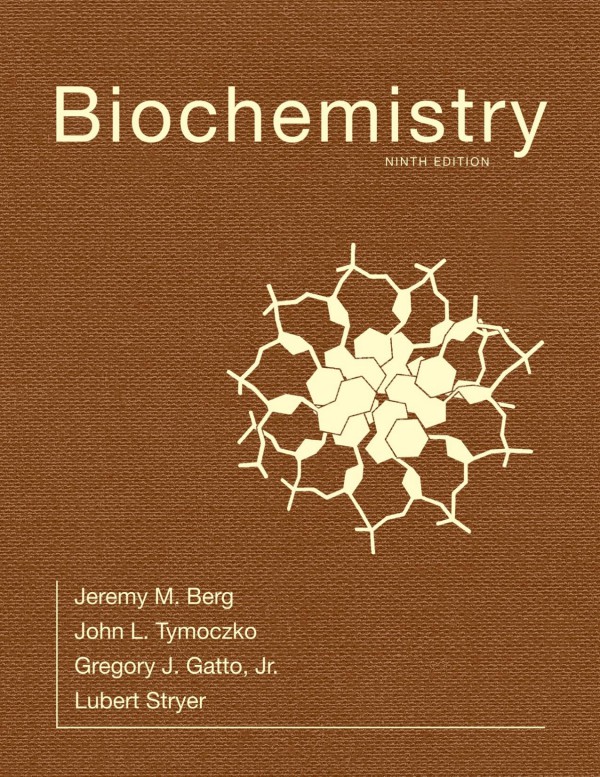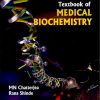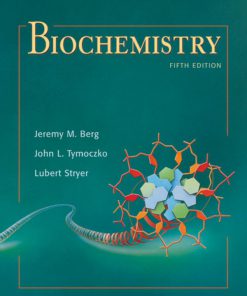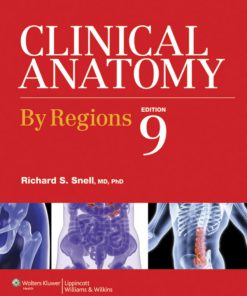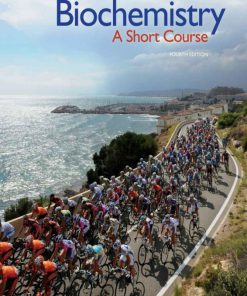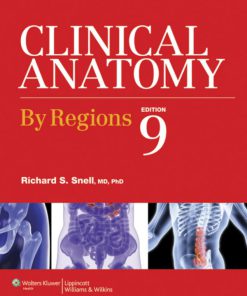Biochemistry 9th Edition by Lubert Stryer 1319114679 978-1319114671
$50.00 Original price was: $50.00.$25.00Current price is: $25.00.
Authors:Jeremy M. Berg; John L. Tymoczko; Gregory J. Gatto, Jr.; Lubert Stryer , Series:Biochemistry [38] , Tags:Science; Life Sciences; Biophysics; Biochemistry , Author sort:Berg, Jeremy M. & Tymoczko, John L. & Gregory J. Gatto, Jr. & Stryer, Lubert , Languages:Languages:eng , Published:Published:Apr 2019 , Publisher:Macmillan Learning , Comments:Comments:This is the textbook only without LaunchPad.For four decades, this extraordinary textbook played a pivotal role in the way biochemistry is taught, offering exceptionally clear writing, innovative graphics, coverage of the latest research techniques and advances, and a signature emphasis on physiological and medical relevance. Those defining features are at the heart of this edition.Biochemistry can also be purchased with W.H. Freeman’s breakthrough online course space, LaunchPad, which offers innovative media content, curated and organised for easy assignability. Including LearningCurve, our adaptive quizzing resource, to engage your students and develop their understanding of biochemistry. To order this book bundled with LaunchPad please order package isbn 9781137563453.
Biochemistry 9th Edition by Lubert Stryer – Ebook PDF Instant Download/Delivery. 1319114679, 978-1319114671
Full download Biochemistry 9th Edition after payment
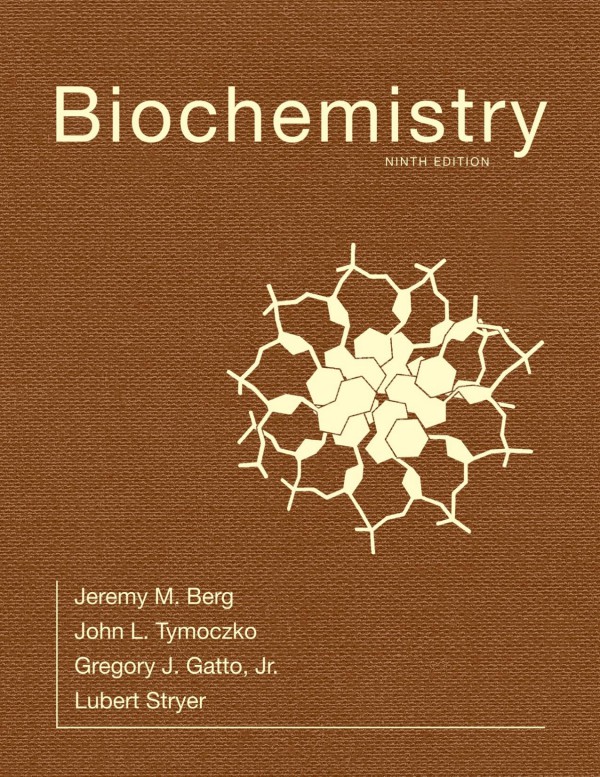
Product details:
ISBN 10: 1319114679
ISBN 13: 978-1319114671
Author: Lubert Stryer
Digital innovation and trusted authorship transform the way biochemistry students learn.
The ninth edition of Biochemistry remains true to the integrity of the original Stryer text. Showcasing exceptionally clear writing, innovative graphics, coverage of the latest research techniques and advances, and a signature emphasis on physiological and medical relevance. Those defining features are at the heart of this edition.
Biochemistry is now supported in Achieve, Macmillan’s new online learning platform. Achieve is the culmination of years of development work put toward creating the most powerful online learning tool for chemistry students. Achieve includes an interactive eBook as well as our renowned assessments and innovative, interactive Metabolic Map. Students will be able to focus their study with adaptive quizzing and more clearly see the relevance of chemistry through case studies. Instructor resources, including tools for active learning are all housed in this exciting new platform.
Achieve features a flexible suite of resources to support learning core concepts, visualization, problem-solving, and assessment. This powerful platform houses all student and instructor resources. You can assign what you want or download resources as you need. Powerful analytics and quick insights in Achieve pair with exceptional content to provide an unrivaled learning and teaching experience.
Biochemistry 9th Table of contents:
Chapter 1: Biochemistry: An Evolving Science
1.1 Biochemical Unity Underlies Biological Diversity
- Biological diversity arises from biochemical principles common to all organisms.
1.2 DNA Illustrates the Interplay Between Form and Function
- DNA Structure: Composed of four building blocks (nucleotides).
- Double Helix: Two single strands of DNA form a double helix, which explains heredity and information storage.
1.3 Concepts from Chemistry Explain the Properties of Biological Molecules
- Formation of DNA Double Helix: The stability and formation of the double helix involve covalent and noncovalent bonds, with acid-base interactions playing a role.
- Thermodynamics: Heat is released during the formation of the double helix, and acid-base reactions are central to many biochemical processes.
- Buffers: Important for regulating pH in organisms and laboratories.
1.4 The Genomic Revolution Is Transforming Biochemistry, Medicine, and Other Fields
- Genome Sequencing: Advances in sequencing have transformed biochemistry and related fields, influencing human biochemistry.
- Environmental Impact: Environmental factors also influence the expression of genes.
- Genomic Data: Genome sequences encode proteins and regulate patterns of gene expression.
Chapter 2: Protein Composition and Structure
2.1 Proteins Are Built from a Repertoire of 20 Amino Acids
- Proteins are constructed from 20 amino acids, each with unique properties.
2.2 Primary Structure: Amino Acids Linked by Peptide Bonds
- Proteins have distinct amino acid sequences, which are determined by genes.
2.3 Secondary Structure: Alpha Helix, Beta Sheet, and Turns
- Secondary structure is stabilized by hydrogen bonds and involves α helices, β sheets, and turns.
2.4 Tertiary Structure: Folding into Globular or Fibrous Forms
- Proteins can form globular or fibrous structures, providing functional and structural roles.
2.5 Quaternary Structure: Assembly of Multisubunit Proteins
- Proteins can form complexes with multiple subunits.
2.6 The Amino Acid Sequence Determines Protein Structure
- The sequence of amino acids dictates protein folding, which can be influenced by posttranslational modifications.
Chapter 3: Exploring Proteins and Proteomes
3.1 The Purification of Proteins
- Purification techniques include using solubility, size, charge, and binding affinity, and proteins can be separated by gel electrophoresis.
3.2 Immunology Techniques
- Antibodies and techniques like Western blotting and co-immunoprecipitation are used to study protein interactions.
3.3 Mass Spectrometry
- Mass spectrometry helps identify proteins and peptides through sequence analysis.
3.4 Peptide Synthesis
- Peptides can be synthesized by automated solid-phase methods.
3.5 Protein Structure Determination
- Methods like X-ray crystallography, NMR spectroscopy, and cryo-electron microscopy are used to determine three-dimensional structures of proteins.
Chapter 4: DNA, RNA, and the Flow of Genetic Information
4.1 Nucleic Acids
- Nucleotides are the building blocks of DNA and RNA, which differ in sugar components.
4.2 The Double Helix
- The double helix of DNA is stabilized by hydrogen bonds and van der Waals interactions.
4.3 DNA Replication
- DNA replication is semiconservative, and polymerases facilitate the process.
4.4 Gene Expression
- Gene expression involves transcription of DNA into RNA and translation of RNA into proteins.
4.5 Genetic Code
- Amino acids are encoded by groups of three bases, and the code is nearly universal.
4.6 RNA Processing
- Eukaryotic genes have introns and exons, with RNA processed to generate mature RNA.
Chapter 5: Exploring Genes and Genomes
5.1 Genetic Tools
- Techniques like restriction enzymes, gel electrophoresis, PCR, and DNA sequencing are used to explore genes.
5.2 Recombinant DNA Technology
- Recombinant DNA techniques have revolutionized biology, enabling gene cloning and protein expression.
5.3 Genomic Sequencing
- Genomes of various organisms, including humans, have been sequenced, providing insights into gene function.
5.4 Eukaryotic Gene Manipulation
- Gene expression can be manipulated through RNA interference and gene editing tools like CRISPR.
Chapter 6: Exploring Evolution and Bioinformatics
6.1 Homologs
- Homologous genes share a common ancestor and can be identified through sequence analysis.
6.2 Sequence Alignments
- Statistical methods allow for alignment of sequences to detect evolutionary relationships.
6.3 Structural Analysis
- Structural conservation across species can help elucidate evolutionary relationships.
6.4 Evolutionary Trees
- Evolutionary trees can be constructed from sequence data, and horizontal gene transfer can explain unexpected branches.
6.5 Experimental Evolution
- Techniques allow for experimental exploration of molecular evolution, including the analysis of ancient DNA.
Chapter 7: Hemoglobin: Portrait of a Protein in Action
7.1 Oxygen Binding
- Hemoglobin binds oxygen through a heme group, with changes in structure upon binding.
7.2 Hemoglobin Cooperativity
- Hemoglobin binds oxygen cooperatively, influenced by allosteric interactions, including 2,3-Bisphosphoglycerate.
7.3 The Bohr Effect
- Hydrogen ions and CO₂ promote oxygen release from hemoglobin through the Bohr effect.
7.4 Hemoglobin Mutations and Disease
- Mutations in hemoglobin can cause disorders like sickle-cell anemia and thalassemia.
Chapter 8: Enzymes: Basic Concepts and Kinetics
8.1 Enzymes as Catalysts
- Enzymes accelerate reactions with high specificity, often requiring cofactors.
8.2 Thermodynamics of Enzymes
- Enzymes alter reaction rates without changing equilibrium, influenced by Gibbs free energy.
8.3 Enzyme Mechanism
- Enzymes facilitate transition state formation to accelerate reactions.
8.4 Michaelis–Menten Kinetics
- The Michaelis–Menten model describes enzyme kinetics, with important parameters like KM and Vmax.
8.5 Enzyme Inhibition
- Enzyme activity can be inhibited by specific molecules, including irreversible inhibitors like penicillin.
8.6 Studying Enzyme Activity
- Enzymes can be studied at the molecular level, revealing their mechanisms of action.
Chapter 9: Catalytic Strategies
9.1 Proteases
- Proteases, like chymotrypsin, catalyze peptide bond hydrolysis using a catalytic triad.
9.2 Carbonic Anhydrases
- Carbonic anhydrases accelerate CO₂ hydration by using zinc for catalysis.
9.3 Restriction Enzymes
- Restriction enzymes cut DNA with high specificity, aided by magnesium ions.
9.4 Myosins
- Myosins convert ATP hydrolysis into mechanical work, requiring conformational changes.
Chapter 10: Regulatory Strategies
10.1 Allosteric Regulation
- Enzymes like aspartate transcarbamoylase (ATCase) are regulated by allosteric interactions.
10.2 Isozymes
- Isozymes offer tissue-specific regulation of enzymatic activity.
10.3 Covalent Modification
- Kinases and phosphatases regulate protein activities through phosphorylation.
10.4 Proteolytic Activation
- Enzymes like chymotrypsin are activated through specific proteolytic cleavage.
Chapter 11: Carbohydrates
- Monosaccharides: Basic sugars like glucose are essential for energy. These can form cyclic structures, and phosphorylated sugars play key roles in energy metabolism.
- Disaccharides: Common sugars like sucrose, maltose, and lactose, and their function in energy storage and digestion.
- Glycoproteins & Proteoglycans: Carbohydrates attach to proteins, forming glycoproteins and proteoglycans with important structural and functional roles.
- Lectins: Proteins that bind specific carbohydrates, aiding in cellular recognition.
Chapter 12: Lipids and Cell Membranes
- Fatty Acids: Essential building blocks of lipids, varying in length and saturation.
- Membrane Lipids: Phospholipids and cholesterol form cell membranes, and their amphipathic nature allows the formation of lipid bilayers.
- Membrane Proteins: Essential for membrane functions, they interact with the lipid bilayer and can transport molecules or act as receptors.
- Fluid Mosaic Model: Describes the dynamic nature of the lipid bilayer and membrane proteins.
Chapter 13: Membrane Channels and Pumps
- Transport Across Membranes: Active and passive transport mechanisms regulate molecule movement, using ATP or concentration gradients.
- Ion Channels & Pumps: Specific ion channels and pumps like P-type ATPases maintain cellular ion gradients, critical for processes like nerve signaling and muscle contraction.
- Gap Junctions & Water Channels: Some channels allow ions and small molecules to pass between cells, while others, like aquaporins, regulate water movement.
Chapter 14: Signal-Transduction Pathways
- G-Protein Coupled Receptors (GPCRs): These receptors trigger intracellular signaling cascades, important for regulating processes like metabolism and growth.
- Insulin & EGF Signaling: Involves receptor activation and phosphorylation cascades that control cellular responses.
- Pathway Defects and Disease: Mutations in signal-transduction pathways can lead to conditions like cancer.
Chapter 15: Metabolism: Basic Concepts and Design
- Metabolic Pathways: Reactions are linked, where energy-yielding processes drive energy-requiring ones.
- ATP: Acts as the energy currency in cells, powering cellular functions and metabolism.
- Energy from Carbon Fuels: Oxidation of carbon fuels like glucose provides energy, which is stored as ATP.
Chapter 16: Glycolysis and Gluconeogenesis
- Glycolysis: Breaks down glucose to produce ATP and pyruvate. This process occurs in two stages: energy investment and energy generation.
- Gluconeogenesis: The process of synthesizing glucose from non-carbohydrate precursors like lactate.
- Regulation: The balance between glycolysis and gluconeogenesis is regulated based on the cell’s energy needs.
Chapter 17: The Citric Acid Cycle
- Linking Glycolysis to the Citric Acid Cycle: The pyruvate dehydrogenase complex converts pyruvate into acetyl-CoA, feeding into the citric acid cycle.
- Cycle Details: The citric acid cycle produces high-energy molecules like NADH and FADH2, which power ATP synthesis in oxidative phosphorylation.
- Biosynthetic Roles: The citric acid cycle intermediates are used for synthesizing amino acids and other cellular components.
Chapter 18: Oxidative Phosphorylation
- Electron Transport Chain: Electrons from NADH and FADH2 pass through protein complexes, pumping protons to create a gradient that powers ATP synthase.
- ATP Synthesis: ATP is generated through a mechanism called chemiosmosis, powered by the proton gradient created during electron transfer.
- Regulation & Diseases: Oxidative phosphorylation is tightly regulated and defects in this pathway can lead to diseases.
Chapter 19: The Light Reactions of Photosynthesis
- Photosynthesis: Converts light energy into chemical energy. The light reactions take place in the thylakoid membranes of chloroplasts.
- Photosystem Action: Photosystems capture light energy and generate a proton gradient, used to produce ATP and NADPH.
- Energy Transfer: Accessory pigments funnel light energy into the reaction centers, allowing efficient energy capture.
Chapter 20: The Calvin Cycle and the Pentose Phosphate Pathway
- Calvin Cycle: Fixes carbon dioxide into organic molecules, producing sugars from CO2 and water.
- Regulation: The Calvin cycle is regulated by light and environmental factors.
- Pentose Phosphate Pathway: Produces NADPH and ribose sugars, which are important for biosynthesis and cell growth.
People also search for Biochemistry 9th:
lehninger principles of biochemistry
clinical biochemistry
importance of biochemistry
biochemistry and molecular biology
acid base balance biochemistry

